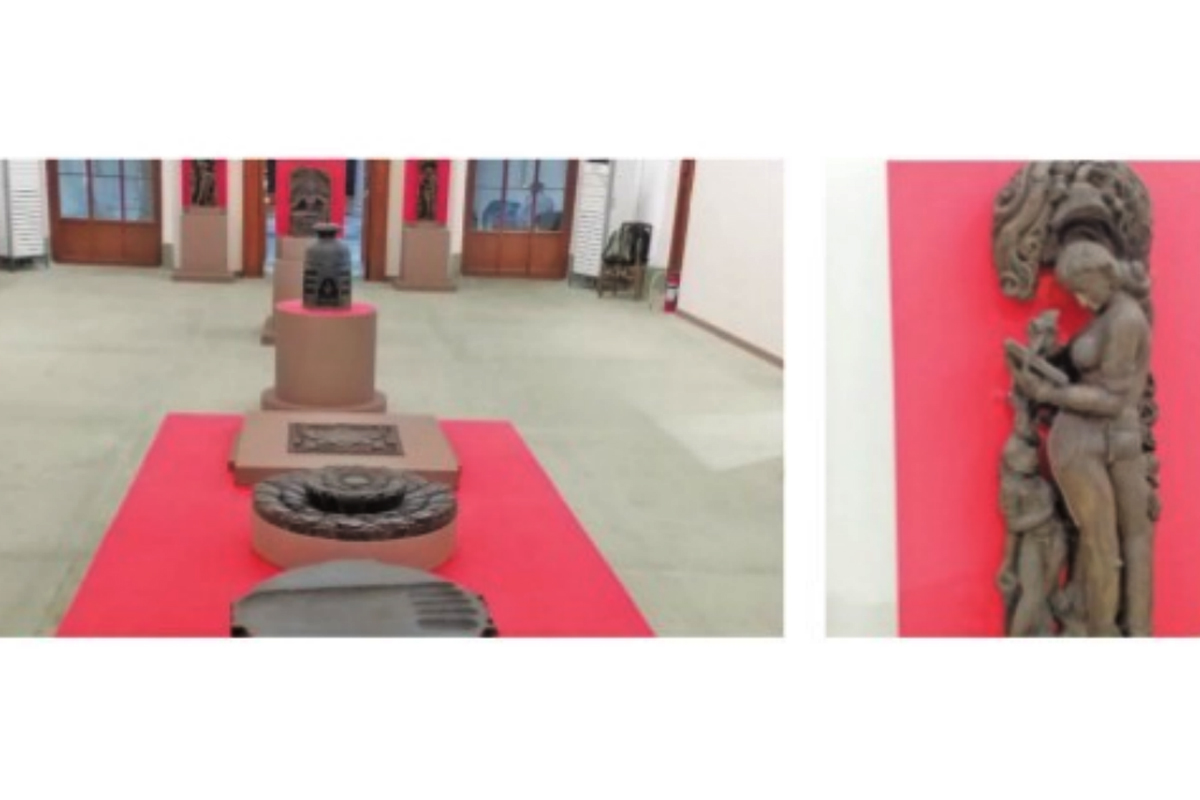City sizzles as Met dept extends heatwave alert
After sizzling at the highest day temperatures today, citizens of south Bengal, including Kolkata could face harsher days with the probability of temperature going up in the next few days.
Mr Purohit pointed out “The new galleries are expected be opened by February next year, when the Indian Museum will celebrate its 260 years. The work will resume soon.”

Photo: SNS
Owing to paucity of space, the Indian Museum, in Kolkata, plans to open permanent galleries in the Old Currency building in Dalhousie that will have exquisite themed sections exhibiting art efact collections from ancient Burma, Tibet and South East Asian countries while another gallery at the Belvedere Estate in Alipore, will focus on the historical significance of symbols and images in India.
Talking to The Statesman on the upcoming plans, the Indian Museum director, Mr. Rajesh Purohit, said “There is a plethora of artefacts which the museum has not been able to showcase due to paucity of space. Hence, we are now looking forward to showcase several of these brilliant pieces of art in the Old Currency building at Dalhousie and at the Belvedere Estate at Alipore.”
He said: “We had received a proposal for the expansion of the Indian Museum but there is no scope to do it in its current premises. After the Archaeological Survey of India took charge of the Currency Building, it has been declared as a monument. A total of 40000 sqft area has been given to the museum for use, but out of it, we will initially use 12- 130000 sqft area for setting up three galleries on the ground floor, first floor, and on the second floor of the building. These galleries will have several themes and the collections that have not been exhibited yet by the museum, will be showcased there.”
Advertisement
“The art gallery will have sections such as the ‘Ancient Burma’ (now Myanmar), Tibet and South East Asian countries. Another exquisite section will be ‘Textiles’ that will showcase 19th and 20th century collections. Not only will people have the opportunity to look at them but they can listen to narratives on the trade and cultural perspective of textiles in India. The facility will be much more than just an exhibition,” said Mr Purohit who added that the tendering process for the work has been completed and work order will soon be issued. Setting up of the gallery will be outsourced to agencies, he said.
Belvedere Estate, the director explained that the exhibition will focus on images and symbols. “The story of India begins here in this exhibition in an intriguing way through the concept of motion and transformation. An example is an exquisitely carved limestone pillar depicting two lions on opposite direction, flanked on either sides of the huge wheel that was found from the earliest capital cities of India called Amaravati’s railing pillar, with an elaborately carved Buddhist Wheel of the Law. Chronologically, as you reverse the Wheel from the period of the Satavahanas. the builders of the Amaravati Stupa, you get back to the time of the emperor Asoka of the Mauryan dynasty, who had conceived this symbol of the Wheel and it was he who in archaeological terms can be identified as the first emperor who gave an identity to our nation,” the director explained.
Mr Purohit pointed out “The new galleries are expected be opened by February next year, when the Indian Museum will celebrate its 260 years. The work will resume soon.”
Advertisement